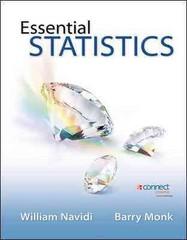Question
The Political Science Department at kent state has n = 26 professors (or, players). They must decide on whether to hire a promising job candidate
The Political Science Department at kent state has n = 26 professors (or, players). They must decide on whether to hire a promising job candidate (alternative A) or not hire her and search again next year (alternative B). The decision is made by simple majority voting. It is a rule of the department that only professors who attend the meeting can vote for one of the two alternatives (hence, absentee voting is not allowed). Attending the meeting is costly for professors, because they have lots of other important things to do (almost as many as their students). Let's denote these costs by c and assume that 0 < c < 1. Thirteen professors prefer alternative A and the other thirteen prefer alternative B. Assume that professors who attend the meeting vote for their preferred alternative. Each professor has a payoff of 2 if her preferred alternative wins, an expected payoff of 1 if there is a tie (in this case a coin toss determines the winning alternative; note that a coin is also tossed when nobody shows up in the meeting), and a payoff of 0 if her preferred alternative loses.
a) Is "everyone attends the meeting and votes" a Nash equilibrium? Why?
b) Is "nobody attends the meeting" a Nash equilibrium? Why
Step by Step Solution
There are 3 Steps involved in it
Step: 1

Get Instant Access to Expert-Tailored Solutions
See step-by-step solutions with expert insights and AI powered tools for academic success
Step: 2

Step: 3

Ace Your Homework with AI
Get the answers you need in no time with our AI-driven, step-by-step assistance
Get Started


